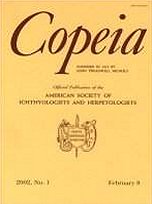Roads affect animal survivorship and behavior and thereby can act as a barrier to movement, which exacerbates habitat fragmentation and disrupts landscape permeability. Field experiments demonstrated that interspecific differences in ecology and behavior of snakes affected responses of species when they encountered and crossed roads. The probability of crossing a road varied significantly among southeastern U.S. snakes, with smaller species exhibiting higher levels of road avoidance. Species also differed significantly in crossing speeds, with venomous snakes crossing more slowly than nonvenomous ones. All species crossed at a perpendicular angle, minimizing crossing time. A model incorporating interspecific crossing speeds and angles revealed that some species cannot successfully cross highways with high traffic densities. Individuals of three species immobilized in response to a passing vehicle, a behavior that would further prolong crossing time and magnify susceptibility to road mortality. Identifying direct and indirect effects of roads on snakes is essential for mitigating road impacts and for designing effective transportation systems in the future.
How to translate text using browser tools
1 December 2005
How do Highways Influence Snake Movement? Behavioral Responses to Roads and Vehicles
Kimberly M. Andrews,
J. Whitfield Gibbons





